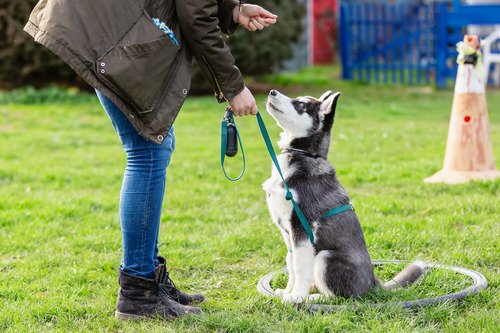If you’re a dog owner looking to strengthen your bond with your dog and improve their behavior, this blog is for you. We’ll explore the essentials of dog training, focusing on positive reinforcement methods. This approach not only helps in teaching new behaviors but also deepens the connection between you and your dog. For personalized advice and support, Chino Valley Animal Hospital is just a call away at (928) 636-4382. Our team can guide you further and answer any questions you may have.
Understanding Positive Reinforcement
Positive reinforcement is a key method in dog training. It’s about rewarding good behavior rather than punishing the bad. When your dog does something right, like sitting or staying on command, rewarding them with treats, praise, or play encourages them to repeat the behavior. This method is not only effective but also strengthens your bond with your dog, making training a fun and rewarding experience for both of you.
The Power of Treats in Training
One of the most effective rewards in dog training is treats. Dogs are generally food-motivated, so treats can be a powerful tool. It’s important to choose healthy options and use them wisely. Small, low-calorie treats are ideal, so you can reward frequently without worrying about overfeeding.
Praise and Affection: More Than Just Treats
Treats are great, but your affection and praise are equally important. A warm “Good job!” or a pat on the head can go a long way in reinforcing good behavior. Dogs thrive on your approval and attention, making these rewards just as compelling as treats.
Establishing Basic Commands
Teaching basic commands is the foundation of dog training. Start with simple commands like ‘sit,’ ‘stay,’ ‘come,’ and ‘heel.’ These not only improve your dog’s behavior but also enhance their safety and your control in various situations. Here are some additional tips to keep in mind while training your dog:
- Consistency is Key: Consistency in training is essential. Use the same words for commands and reward promptly after the desired behavior is displayed. Consistent training helps your dog understand what is expected of them, leading to faster learning.
- Short and Sweet Training Sessions: Keep training sessions short, around 10 to 15 minutes, to maintain your dog’s attention. Multiple short sessions are more effective than long, tiring ones. This keeps training enjoyable and productive.
Socialization and Its Importance
Socialization is a crucial part of dog training. It involves exposing your dog to different people, animals, environments, and experiences. This helps them become well-adjusted and less fearful in new situations.
Early Socialization: The Best Start
The best time to start socializing your dog is when they are a puppy. Early socialization helps them develop into confident, well-mannered adults. However, it’s never too late to start, even with older dogs.
Safe and Controlled Exposure
When socializing your dog, ensure it’s in a safe and controlled environment. Start with less crowded places and gradually introduce them to busier environments. Always be attentive to your dog’s comfort level and back off if they seem overwhelmed.
Handling Behavioral Issues
While training, you may encounter behavioral issues. It’s important to address these calmly and without punishment. Positive reinforcement remains the best approach, even in correcting undesirable behaviors, but there are steps you can take to handling behavioral issues:
- Identifying the Cause: Understanding why your dog is exhibiting certain behaviors is the first step. Sometimes, issues like excessive barking or chewing stem from boredom or anxiety. Identifying the root cause helps in addressing the behavior effectively.
- Seeking Professional Help: If you’re struggling with your dog’s behavior, don’t hesitate to seek professional help. Trainers and veterinarians, like those at Chino Valley Animal Hospital, can offer tailored advice and support. Call us at (928) 636-4382 for guidance.
Dog training is a journey that requires patience, consistency, and understanding. By using positive reinforcement, you can effectively train your dog while strengthening your bond. Remember, every dog is unique, and what works for one may not work for another. If you need assistance or advice, Chino Valley Animal Hospital is here to help. Give us a call at (928) 636-4382 for more information or to schedule an appointment.





